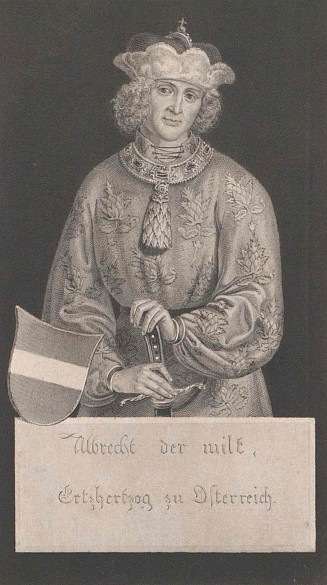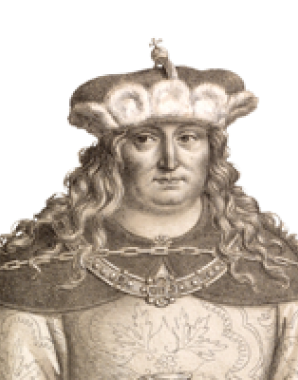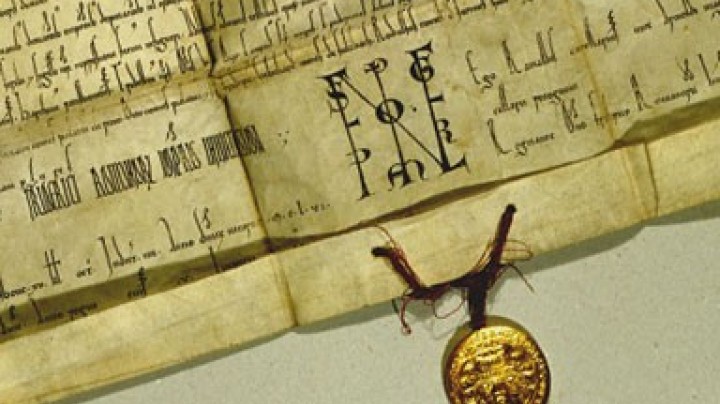Albrecht VI: the ambitious second son
Duke Albrecht VI was a controversial figure and symptomatic of the time of crisis that the dynasty underwent during the fifteenth century. The conflict with his brother Emperor Frederick III additionally complicated what was an already difficult situation.
Born on 18 December 1418, Albrecht was the second son of Duke Ernst of Styria and his second wife Cymburgis of Masovia. After the early death of his father he grew up together with his elder brother Frederick in Innsbruck under the guardianship of their uncle, Duke Frederick IV of Tyrol.
The younger boy was overshadowed by Frederick, who on the death of Siegmund in 1439 at first became the senior member of the Leopoldinian line of the dynasty, and then received the power of disposal over the inheritance of the Albertine line after the death of Albrecht V in the same year. The younger brother initially received money and the regency over the Forelands, that is, the scattered remains of the ancestral Habsburg possessions in Swabia and the Allgäu, by way of compensation. The principal city of this territory, Freiburg im Breisgau, owes the foundation of its university in 1457 to the young ruler.
The ambitious Albrecht insisted on a division of the inheritance, especially after the death of the heir to the Albertine line, Ladislaus Postumus, in 1457, demanding the cession of the regency over the duchy of Austria (equivalent to modern-day Upper and Lower Austria including Vienna). The conflict between the two brothers began.
Frederick tried to placate his brother by handing over Upper Austria. Albrecht took up residence in Linz, and for Upper Austria the presence of a sovereign ruler meant its final emancipation from Lower Austria, with which it had until then formed a more or less fixed unit.
Thanks to wide-ranging concessions to the Estates and generous gifts of ‘Chamber Estates’ to his followers – earning him the epithet of ‘the Munificent’ – Albrecht quickly built up strong support among the nobility. In 1461 he finally dared to declare open war on his imperial brother, whose position in Lower Austria was not uncontested owing to political developments in neighbouring Bohemia and Hungary. Albrecht mustered an army and headed for Vienna, Frederick’s residence. The assertive Viennese citizenry, who were dissatisfied with Frederick’s rule, sided with Albrecht and besieged the emperor together with his family and loyal followers in the Hofburg. A siege lasting four months failed to bring about a decision. The emperor was finally rescued through the intervention of the Bohemian king George of Poděbrady.
A compromise was reached: Frederick ceded the regency in Lower Austria to Albrecht for a period of eight years and received a financial settlement in return. The emperor then retreated to Wiener Neustadt, which at that time belonged to Styria.
Albrecht’s rule in Lower Austria was marked by conflict. He soon lost the support of the Viennese citizenry, which now found itself confronted with the economic consequences of the imperial court’s absence. The mayor Wolfgang Holzer took up secret negotiations with Frederick. When this came to light Albrecht had the mayor and his confidants executed as traitors. This brutal action tipped the mood of the Viennese populace. Before the situation could escalate, however, Albrecht died suddenly on 2 December 1463, very likely from an infection, possibly from bubonic plague. Contemporary reports did not exclude the possibility that he might have been poisoned.
As Albrecht died without issue – his marriage in 1452 to Mechthild of the Palatinate (1419–1482; also called Mathilde), a member of the Wittelsbach dynasty, having remained childless – his claims passed to his hated brother Frederick, who was thus relieved of a problem. Once again, time had worked in Frederick’s favour.

















